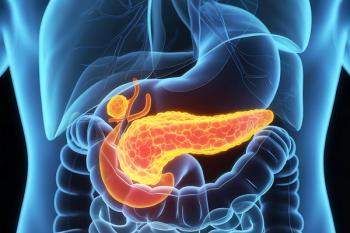
- The Application Notebook-06-01-2011
- Volume 0
- Issue 0
Novel C18 Stationary Phase Provides Exceptional Results for Metabolite Profiling
Metabolomics, the study of small molecule metabolites that are found within a biological sample, is an emerging field of study. Progress in this field depends upon technological advancement in the fields of LC–MS and separation technology.
Bhavana Verma1, Itaru Yazawa1, Oscar Yanes2, Ralf Tautenhahn2, Gary J. Patti2, and Gary Siuzdak2, 1Imtakt USA and2 The Scripps Research Institute
Metabolomics, the study of small molecule metabolites that are found within a biological sample, is an emerging field of study. Progress in this field depends upon technological advancement in the fields of LC–MS and separation technology. In untargeted metabolomics, simultaneous detection of the largest number of metabolites is desired. Reversed phase C18 columns are generally used for this type to study, however they provide limited retention of polar compounds. In this paper, we compare the retention of 31 model compounds characterized by different polarities using a Cogent Bidentate C18, a Waters XBridge C18, and an Imtakt Scherzo SM-C18 column. The Imtakt Scherzo column showed the best retention of polar compounds, with only 10% of the polar compounds eluting within the first 2 min as compared to 22% by the Cogent column and 45% by the Waters column.
Experimental
All data were collected on an HPLC system coupled to mass spec detection. The mobile phase used for the column comparison of the 31 model compounds was A = water, 0.1% formic acid, B = acetonitrile, 0.1% formic acid. The linear gradient used started at 100%A (0–5 min) and finished at 100%B (35–40 min) (see Figure 1).
Figure 1: 1. alanine 2. N,N-dimethylglycine 3. serine 4. fumaric acid 5. succinic acid 6. cysteine (Bradykinin fragment 1-5) 7. oxaloacetic acid 8. Gly-Gly 9. malic acid 10. alpha-ketoglutarate 11. citric acid 12. 2-methylhippuric acid 13. gamma-D-glutamylglycine 14. salbutomal 15. AMP (bradykinin fragment 1-8) 16. ribo-avin 17. Phe-Gly-Phe-Gly XBridge 18 (150 x 1.0 mm) 18. s-(p-nitrobenzyl)glutathione Scherzo SM-C18, 150 x 2 mm A: 0.1% formic acid in ater B: 0.1% formic acid in acetonitrile The linear gradient elution used started at 100% A (time 0-5 min) and finished at 100% B (35-40 min) 250 uL/min, room temp. ESI-MS in positive and negative ionization mode 19. s-(p-azidophenacyl)glutathione 20. Taurocholic acid 21. O-beta-D-glucuronosyl-naphthol AS-BI 22. Leucine enkephalin 23. Arg-Pro-Pro-Gly-Phe 24. Reserpine 25. GSSG 26. Arg-Lys-Asp-Val-Tyr 27. Coenzyme A 12. 2-methylhippuric acid 28. Acetyl CoA 29. Ala-Ser- Thr-Thr-Thr-Asn-Tyr-Thr (peptide T) 30. Arg-Pro-ProGly-Phe-Ser-Pro-Phe 31. Tyr-Tyr-Tyr-Tyr-Tyr-Tyr 17. Phe-Gly-Phe-Gly XBridge 18 (150 x 1.0 mm) 18. s-(p-nitrobenzyl)glutathione Scherzo SM-C18, 150 x 2 mm A: 0.1% formic acid in ater B: 0.1% formic acid in acetonitrile The linear gradient elution used started at 100% A (time 0-5 min) and finished at 100% B (35-40 min) 250 uL/min, room temp. ESI-MS in positive and negative ionization mode
Discussion and Results
The study shows that Imtakt's Scherzo column, consisting of a combination of C18, anion, and cation ligands, outperforms other C18 columns in the retention of polar metabolites. This result is important in the advancement of untargeted metabolomics, as traditional C18 columns struggle to retain polar compounds and can limit the detection of a wide polarity range of metabolites.
Reference
(1) Oscar Yanes, Ralf Tautenhahn, Gary J. Patti, and Gary Siuzdak, Analytical Chemistry 83(6), 2152–2161 (2011).
Imtakt USA
6703 Germantown Avenue, Suite 240, Philadelphia, PA 19119
tel. (888) 456-HPLC, (215) 665-8902, fax (501) 646-3497
Email:
Articles in this issue
over 14 years ago
Hydroxyethylstarches (HES)over 14 years ago
Aggregated Singletons for Automated Purification WorkflowNewsletter
Join the global community of analytical scientists who trust LCGC for insights on the latest techniques, trends, and expert solutions in chromatography.





